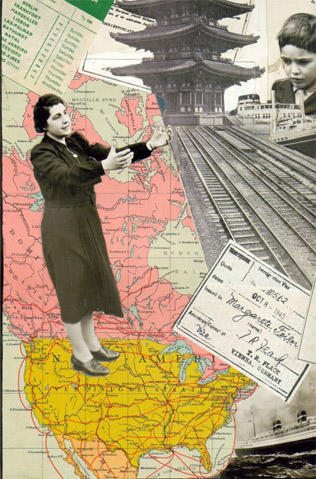Sensational Archive Discovery of the Vienna Jewish Community
 In the year 2000, employees of the Jewish Community Vienna (Israelitische Kultusgemeinde Wien) made a startling discovery. In a vacant apartment in one of the community’s buildings in Vienna’s 15th district they discovered dozens of wooden cabinets containing index cards and 800 cardboard boxes filled with files and documents. Some of these materials are part of a cache of approximately two million pages of Holocaust-era documents and include reports, letters, emigration and financial documents, deportation lists, card files, books, photographs, maps, and charts detailing the final years of the Viennese Jewish community. They represent a substantial part of the archive of what was once the largest German-speaking Jewish community in Europe.
In the year 2000, employees of the Jewish Community Vienna (Israelitische Kultusgemeinde Wien) made a startling discovery. In a vacant apartment in one of the community’s buildings in Vienna’s 15th district they discovered dozens of wooden cabinets containing index cards and 800 cardboard boxes filled with files and documents. Some of these materials are part of a cache of approximately two million pages of Holocaust-era documents and include reports, letters, emigration and financial documents, deportation lists, card files, books, photographs, maps, and charts detailing the final years of the Viennese Jewish community. They represent a substantial part of the archive of what was once the largest German-speaking Jewish community in Europe.
In 2002, the U.S. Holocaust Memorial Museum in Washington, D.C. and the Jewish Community Vienna agreed to jointly rescue these materials and make them available to the public. Two million pages have been microfilmed and categorized. At a Roundtable Discussion on June 7, 2007 at the U.S. Holocaust Memorial Museum in Washington, D.C. the archives were presented to the public highlighting the importance of this discovery for the scholarly field of Holocaust studies.
The archival holdings are unique in terms of scope and completeness. They document the community’s organization, its officials and members, and its religious, educational, scientific and cultural facilities during the Holocaust. Among the findings were deportation lists, emigration applications and many other documents which offer insight into the fate of the victims of the Holocaust. They are significant not only for their revelations of value to scholars, but also for the answers they provide to survivors and their heirs for use in pending compensation and restitution claims.
Following meticulous conservation, parts of the archives are now on display in Austria at an exhibition, entitled “Ordnung muss sein,” organized by the Jewish Museum in Vienna in cooperation with the Jewish Community Vienna and the Central Archives for the History of the Jewish People in Jerusalem. In the 1950s, the historical archives of the Jewish Community Vienna were transferred for storage to the Central Archives for the History of the Jewish People in Jerusalem. The exhibit, which shows records spanning 300 years from the archive’s early years to the Holocaust period, runs from July 4 - October 21, 2007 in the Palais Eskeles, Vienna. The Holocaust-relevant records of the Jewish Community Vienna can also be viewed on microfilm at the Holocaust Museum in Washington and at the Central Archives for the History of the Jewish People in Israel. In conjunction with the exhibit in Vienna, a screening will take place on October 14 at the Austrian Film Museum of the interview that Claude Lanzmann, director of the groundbreaking documentary Shoah, taped in the 1970s with Benjamin Murmelstein, a functionary of the Jewish Community Vienna during the Holocaust. The six-hour interview, the original of which is stored at the U.S. Holocaust Memorial Museum, has never before been seen by the public.
The Holocaust-relevant archives will become an integral part of the planned Vienna Wiesenthal Institute for Holocaust Studies. Together with the documentation collected by Simon Wiesenthal, the archives will be made accessible for researchers and the interested public under one roof. Sixty years later, the Jewish Community Vienna is reconstructing its institutional memory and restoring to Austria a piece of its history. The Institute will serve as a research institute for visiting scholars and as a showcase for themed exhibitions.
